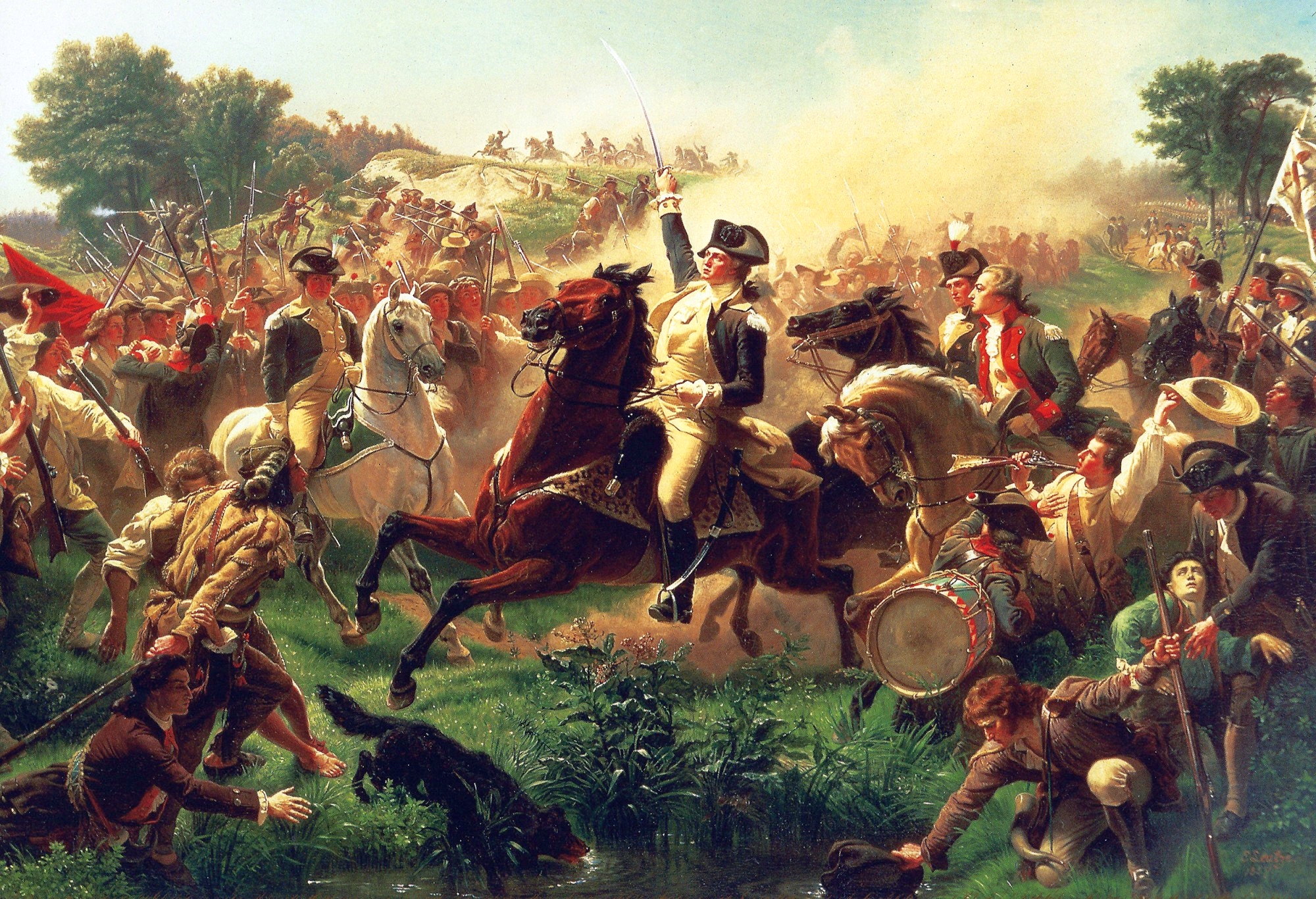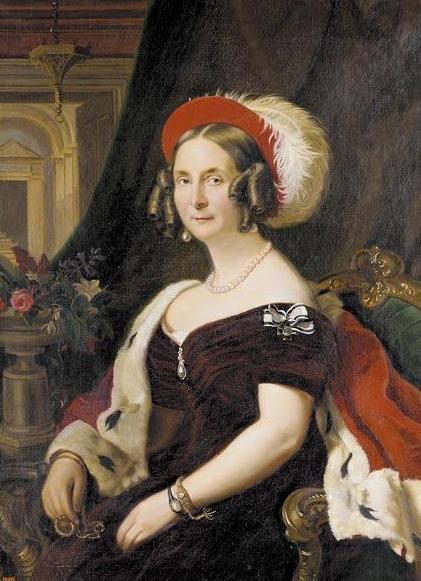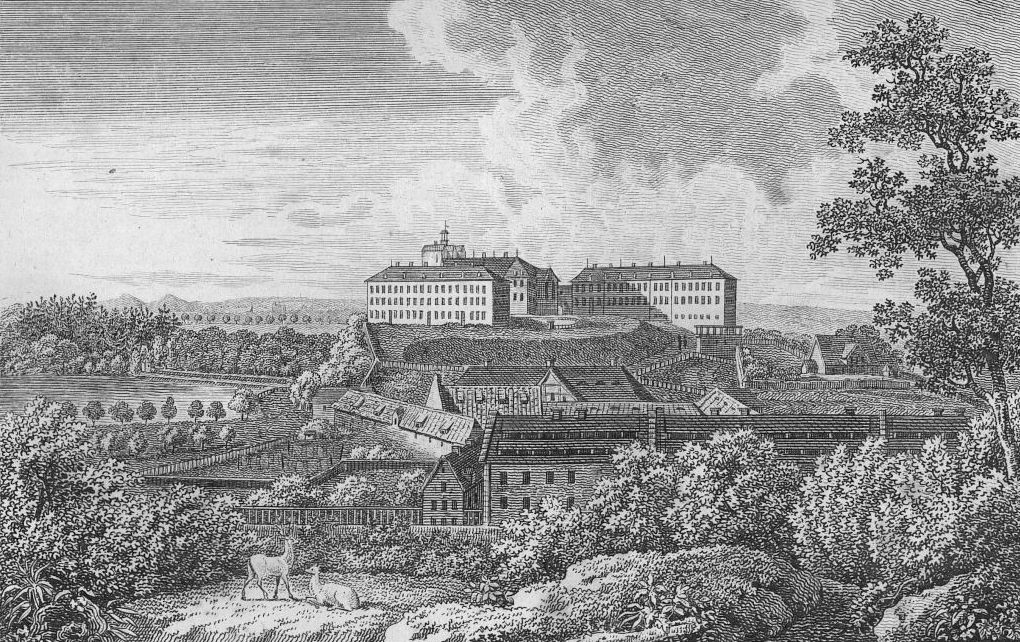|
Henry, Duke Of Anhalt-Köthen
Henry of Anhalt-Köthen (30 July 1778, Pszczyna Castle, Schloss Pszczyna, Pless23 November 1847, Köthen) was a German prince of the House of Ascania, ruler of the non-sovereign principality of Duchy of Pless, Anhalt-Pless and the last ruler of the duchy of Anhalt-Köthen. Life He was the fourth (but third surviving) son of Frederick Erdmann, Prince of Anhalt-Pless, by his wife, Louise Ferdinande, daughter of Henry Ernest of Stolberg-Wernigerode, Henry Ernest, Count of Stolberg-Wernigerode. In 1796, he joined the Prussian army. During the campaign of 1806, he attained the rank of major. Before his retirement from active service, Henry was elevated to the rank of ''Major General, Generalmajor''. After his elder brother Frederick Ferdinand, Duke of Anhalt-Köthen, Frederick Ferdinand inherited Anhalt-Köthen in 1818, Henry assumed the government over the state country of Pless. When Frederick Ferdinand died in 1830, Henry succeeded him in Köthen, whereas he left Pszczyna, Pless to ... [...More Info...] [...Related Items...] OR: [Wikipedia] [Google] [Baidu] |
1778 Heinrich
Events January–March * January 18 – Third voyage of James Cook: Sea captain, Captain James Cook, with ships HMS Resolution (1771), HMS ''Resolution'' and HMS Discovery (1774), HMS ''Discovery'', first views Oahu then Kauai in the Hawaiian Islands of the Pacific Ocean, which he names the ''Sandwich Islands''. * February 5 – **South Carolina becomes the first state to ratify the Articles of Confederation. ** **General John Cadwalader (general), John Cadwalader shoots and seriously wounds Major General Thomas Conway in a duel after a dispute between the two officers over Conway's continued criticism of General George Washington's leadership of the Continental Army.''Harper's Encyclopaedia of United States History from 458 A. D. to 1909'', ed. by Benson John Lossing and, Woodrow Wilson (Harper & Brothers, 1910) p166 * February 6 – American Revolutionary War – In Paris, the Treaty of Alliance (1778), Treaty of Alliance and the Treaty of Amity an ... [...More Info...] [...Related Items...] OR: [Wikipedia] [Google] [Baidu] |
Reuss Of Köstritz
The Principality of Reuss-Gera (german: Fürstentum Reuß-Gera), called the Principality of the Reuss Junior Line (german: Fürstentum Reuß jüngerer Linie) after 1848, was a sovereign state in modern Germany, ruled by members of the House of Reuss. It was one of the successor states of the Imperial County of Reuss. The Counts Reuss, with their respective capitals and ''Residenzen'' at Gera, Schleiz, Lobenstein, Köstritz and Ebersdorf, were all elevated to the title of prince (''Fürst'') in 1806. Their successor branch heads shared that title, while their cadets were also each titled prince (''Prinz''). Thus all males of the family were properly "Prince Heinrich (Roman numeral) Reuss, ''J.L.''", without use of a nobiliary particle, although for convenience their branch names remained in colloquial use (for example, "Prince Heinrich I Reuss of Köstritz"). Territory The territories of four separate branches of the Junior Line amalgamated between 1824 and 1848, at which tim ... [...More Info...] [...Related Items...] OR: [Wikipedia] [Google] [Baidu] |
Emmanuel Lebrecht, Prince Of Anhalt-Köthen
Emmanuel Lebrecht of Anhalt-Köthen (Köthen, 20 May 1671 – Köthen, 30 May 1704), was a German prince of the House of Ascania and ruler of the principality of Anhalt-Köthen. He was the only child of Emmanuel, Prince of Anhalt-Köthen, by his wife Anna Eleonore of Stolberg-Wernigerode, Anna Eleonore, daughter of Henry Ernest, Count of Stolberg. Life Emmanuel Lebrecht was born six months after the death of his father on 8 November 1670 and was declared ruler of Anhalt-Köthen under the regency of his mother immediately at birth. The Dowager Princess Anna Eleonore ruled over Köthen for almost twenty years, until her death in 1690, and then John George II, Prince of Anhalt-Dessau, succeeded her in the regency for the next two years, until January 1692, when Emmanuel Lebrecht was formally proclaimed an adult and took over the government of his lands. When Emmanuel Lebrecht was still a young prince, he fell in love with Gisela Agnes of Rath (b. Klein-Wülknitz near Köthen, 9 Octo ... [...More Info...] [...Related Items...] OR: [Wikipedia] [Google] [Baidu] |
Emilie Of Promnitz-Pless
Christine Johanna Emilie, Princess of Anhalt-Köthen (née Countess Christine Johanna Emilie of Promnitz-Pless; 15 September 1708 – 20 February 1732) was the second wife and consort of Augustus Louis, Prince of Anhalt-Köthen. Biography Countess Christine Johanna Emilie of Promnitz-Pless was born on 15 September 1708 in Żary, to Erdmann II, Count of Promnitz and Anna Maria of Saxe-Weissenfels, the daughter of Johann Adolf I, Duke of Saxe-Weissenfels and Johanna Magdalena of Saxe-Altenburg. On 14 January 1726, she married Prince Augustus Louis of Anhalt-Köthen in Żary. She was his second wife. His first wife, Agnes Wilhelmine von Wuthenau, with whom he was in a morganatic marriage, died in 1725. Emilie and Augustus Louis had five children: *Christiane Anna Agnes (b. Köthen, 5 December 1726 - d. Wernigerode, 2 October 1790), married on 12 July 1742 to Henry Ernest, Count of Stolberg-Wernigerode. *Frederick Augustus, Hereditary Prince of Anhalt-Köthen (b. Köthen, 1 Nove ... [...More Info...] [...Related Items...] OR: [Wikipedia] [Google] [Baidu] |
Augustus Louis, Prince Of Anhalt-Köthen
Augustus Louis of Anhalt-Köthen (9 June 1697 in Köthen – 6 August 1755 in Köthen), was a German prince of the House of Ascania and ruler of the principality of Anhalt-Köthen. He was the third (second surviving) son of Emmanuel Lebrecht, Prince of Anhalt-Köthen, by his wife Gisela Agnes of Rath. Life In 1702, Augustus' father instituted primogeniture in his lands so that on his death in 1704 only the eldest surviving son, Leopold, inherited his father's titles and powers. When Leopold was declared of age in 1715, Augustus Louis tried to claim his rights under the old system, but finally Leopold forced him to renounce them. In exchange, Augustus Louis received the enclave of Güsten with its old ''Schloss'' built in 1547 by Prince George III and the town of Warmsdorf with all its revenues, as well as other concessions. After the death from smallpox of Leopold and his two sons in 1728, Augustus Louis inherited Anhalt-Köthen, however he soon faced disputes with h ... [...More Info...] [...Related Items...] OR: [Wikipedia] [Google] [Baidu] |
Hans Henry X, Count Of Hochberg-Fürstenstein
Hans may refer to: __NOTOC__ People * Hans (name), a masculine given name * Hans Raj Hans, Indian singer and politician ** Navraj Hans, Indian singer, actor, entrepreneur, cricket player and performer, son of Hans Raj Hans ** Yuvraj Hans, Punjabi actor and singer, son of Hans Raj Hans * Hans clan, a tribal clan in Punjab, Pakistan Places * Hans, Marne, a commune in France * Hans Island, administrated by Greenland and Canada Arts and entertainment * ''Hans'' (film) a 2006 Italian film directed by Louis Nero * Hans (Frozen), the main antagonist of the 2013 Disney animated film ''Frozen'' * ''Hans'' (magazine), an Indian Hindi literary monthly * ''Hans'', a comic book drawn by Grzegorz Rosiński and later by Zbigniew Kasprzak Other uses * Clever Hans, the "wonder horse" * ''The Hans India'', an English language newspaper in India * HANS device, a racing car safety device *Hans, the ISO 15924 code for Simplified Chinese script See also *Han (other) *Hans im Glück, a Germa ... [...More Info...] [...Related Items...] OR: [Wikipedia] [Google] [Baidu] |
Semi-Salic
The Salic law ( or ; la, Lex salica), also called the was the ancient Frankish civil law code compiled around AD 500 by the first Frankish King, Clovis. The written text is in Latin and contains some of the earliest known instances of Old Dutch. It remained the basis of Frankish law throughout the early Medieval period, and influenced future European legal systems. The best-known tenet of the old law is the principle of exclusion of women from inheritance of thrones, fiefs, and other property. The Salic laws were arbitrated by a committee appointed and empowered by the King of the Franks. Dozens of manuscripts dating from the sixth to eighth centuries and three emendations as late as the ninth century have survived. Salic law provided written codification of both civil law, such as the statutes governing inheritance, and criminal law, such as the punishment for murder. Although it was originally intended as the law of the Franks, it has had a formative influence on the tradi ... [...More Info...] [...Related Items...] OR: [Wikipedia] [Google] [Baidu] |
Leopold IV, Duke Of Anhalt
Leopold IV Frederick, Duke of Anhalt (1 October 1794 – 22 May 1871) was a German prince of the House of Ascania. From 1817 until 1853 he was ruler of the duchy of Anhalt-Dessau and from 1847 until 1853 also ruler of the duchy of Anhalt-Köthen. From 1853 until 1863 he was the ruler of the joined duchy of Anhalt-Dessau-Köthen and from 1863 the first ruler of the united duchy of Anhalt. Early life Leopold was born in Dessau on 1 October 1794 as the eldest son of Frederick, Hereditary Prince of Anhalt-Dessau, by his wife Landgravine Amalie of Hesse-Homburg, daughter of Frederick V, Landgrave of Hesse-Homburg. Following the premature death of his father in 1814, he became heir to the duchy of Anhalt-Dessau. Reign Following the death of his grandfather Leopold III he succeeded as duke on 9 August 1817. During the Revolutions of 1848 he was forced to grant a constitution to Dessau on 29 October 1848. It was revoked, however, on 4 November 1849, then replaced with a new version ... [...More Info...] [...Related Items...] OR: [Wikipedia] [Google] [Baidu] |
Alexander Karl, Duke Of Anhalt-Bernburg
, house = Ascania , father = Alexius Frederick Christian, Duke of Anhalt-Bernburg , mother = Marie Friederike of Hesse-Kassel , birth_date = , birth_place = Ballenstedt, Duchy of Anhalt-Bernburg, Holy Roman Empire , death_date = , death_place = Hoym, Anhalt-Bernburg, German Confederation , burial_date = , burial_place = , religion = Alexander Charles, Duke of Anhalt-Bernburg (2 March 1805 – 19 August 1863) was a German prince of the House of Ascania. From 1834 until 1863 he was the last duke of the Duchy of Anhalt-Bernburg. Life Early life Alexander Charles was born at Ballenstedt on 2 March 1805 as the second (but eldest and only surviving) son of Alexius Frederick Christian, Duke of Anhalt-Bernburg, by his first wife Maria Fredericka, daughter of William I, Elector of Hesse. Succession After the death of his father in 1834, Alexander Karl succeeded him in Anhalt-Bernburg. Marriage In Gottorp on 30 October 1834 Alexander ... [...More Info...] [...Related Items...] OR: [Wikipedia] [Google] [Baidu] |
General Of Infantry
General of the Infantry is a military rank of a General officer in the infantry and refers to: * General of the Infantry (Austria) * General of the Infantry (Bulgaria) * General of the Infantry (Germany) ('), a rank of a general in the German Imperial Army, Reichswehr or Wehrmacht, as well as an official position of the Bundeswehr, held by an officer in the rank of Generalleutnant now and previously of General of the branch, who is responsible for the training and equipment of the infantry. * General of the Infantry (Imperial Russia) ('), rank of general in the Russian Imperial Army See also * General of the Cavalry * General of the Artillery (other) * G.I. (military) G.I. are initials used to describe the soldiers of the United States Army and airmen of the United States Air Force and general items of their equipment. The term G.I. has been used as an initialism of "Government Issue", "General Issue", or ..., a U.S. rank thought to mean "general infantry" but com ... [...More Info...] [...Related Items...] OR: [Wikipedia] [Google] [Baidu] |
Order Of The Black Eagle
The Order of the Black Eagle (german: Hoher Orden vom Schwarzen Adler) was the highest order of chivalry in the Kingdom of Prussia. The order was founded on 17 January 1701 by Elector Friedrich III of Brandenburg (who became Friedrich I, King in Prussia, the following day). In his Dutch exile after World War I, deposed Emperor Wilhelm II continued to award the order to his family. He made his second wife, Princess Hermine Reuss of Greiz, a Lady in the Order of the Black Eagle. Overview The statutes of the order were published on 18 January 1701, and revised in 1847. Membership in the Order of the Black Eagle was limited to a small number of knights, and was divided into two classes: members of reigning houses (further divided into members of the House of Hohenzollern and members of other houses, both German and foreign) and capitular knights. Before 1847, membership was limited to nobles, but after that date, capitular knights who were not nobles were raised to the nobility ( ... [...More Info...] [...Related Items...] OR: [Wikipedia] [Google] [Baidu] |




